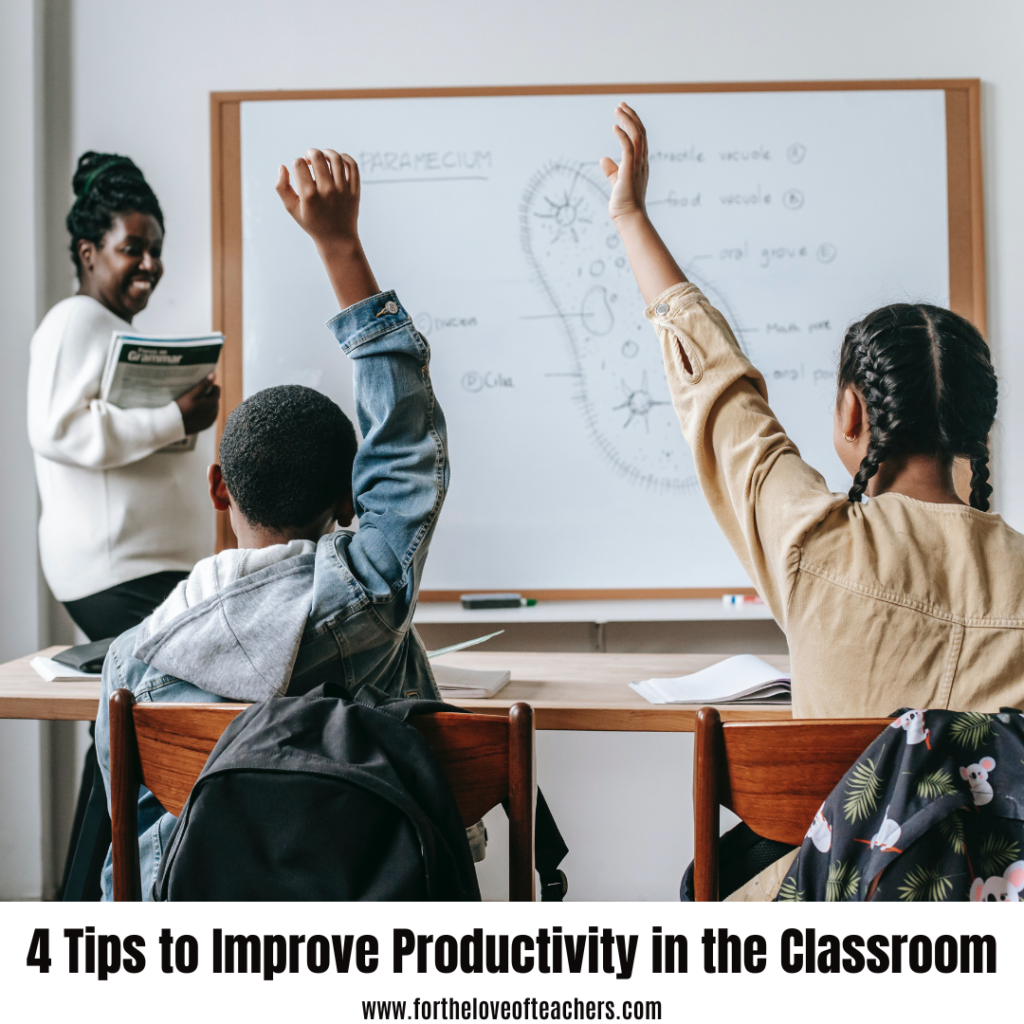
Being an educator is never an easy job—especially during these unpredictable times. On top of delivering lessons well, there are a lot of aspects that you have to look into once you’re inside the classroom. From ensuring the well-being and attention of your students to keeping them engaged and productive.
However, due to pandemic-induced stress and anxiety, students and teachers alike are becoming more prone to downtimes and unproductivity.
As a result, quality learning and teaching become compromised. Now, the burden falls on the educator’s shoulders—how can you improve the productivity of everyone in the room, including yourself?
Don’t worry! Here are some tips to get you started!
4 Tips to Improve Classroom Productivity
As a teacher, you are the role model for your students. Your energy can create a domino effect around the room that can also affect their class participation.
However, it doesn’t mean that you have to be happy all the time. Being productive is not rooted in emotions but rather in your goals—which leads us to the first tip.
Tip #1: Set classroom objectives
Sounds simple, right? But having a clear list of priorities that you need to achieve for every class can positively impact your productivity.
Of course, this still depends on how you map out your school activities, but a daily task tracker might help you stay on track more efficiently. It’s one of the best ways to ensure that you’re tapping the essential facets of your lectures, too!
How it can help students?: Preparing classroom objectives before class is also beneficial for your students. These agendas will anchor them when the discussions get complicated. Moreover, these will keep them focused through every milestone they accomplish in your class, thus increasing their productivity.
Tip #2: Get creative
Classrooms are where one-of-a-kind ideas are forged and made. Being an educator also means being an artist.
From using new tools to teach lessons you’ve taught over and over, you are also capable of creating a classroom culture that is open and safe for students to grow and be imaginative.
Challenging yourself to get creative is also how you nurture personal growth and practice productivity. Who knows, you might even discover a hidden talent while exploring along the way?
How it can help students: When teachers get more dynamic, students become more engaged. By using visual references, adapting gamified math lessons, or using songs to make boring (but essential) lectures bearable, students enjoy your class. When they do, this can lead to quality outputs and more participation during recitations and activities!
Tip #3: Practice time management
Time is an essential part of productivity. It can be a hard practice though, especially if you’re not used to following a structure when teaching. But compartmentalizing your time inside the classroom can yield more productivity. Just align your objectives with your class hours to create a working timeline for your day.
Don’t worry, you don’t have to abide by it on the dot. Just set a reasonable limit for each aspect of the discussion, activities, and post-mortem for your classes. That way, you have a stopping point to move forward to another task.
How it can help students: Setting time limits on school work also helps students to become more productive. It prompts them to think on the spot and with proper guidance, teachers can use this as a practice to merge their ideas and collaboration skills to come up with creative outputs.
Tip #4: Prioritize well-being and mental health
Unproductivity is mostly rooted in internal habits and emotions.
It is usually caused by different factors like mental health issues, undiagnosed learning disability, or personal problems. It is also because of these that teachers tend to underperform in and out of the classroom. Some also lose focus due to the extra toll that administrative tasks put on their shoulders which compromises the quality of education given to students.
So, if you are feeling more fatigued than usual, always remember that it is okay to step back. Prioritize your well-being and recuperate. Try meditating, pampering, or simply breathing. Remember: you can’t pour from an empty cup. Rest up and face your lesson plans the day after. You deserve it.
How it can help students: If you are well, you can look after your students better. You become more attentive if one does not participate enough during group activities or if you go along well with others. Practicing empathy and consideration for students can make them feel included and seen. This improves the morale of the classroom and motivates them to do better during school work and activities.
The Bottomline: Productivity is rooted in empathy.
More than productivity, teachers must first understand and know themselves and their students. The key to a high-performing classroom is to make sure that everyone feels safe, seen, and heard when they partake in academic activities. Once you’ve cultivated an inclusive classroom culture, productivity follows.
As an educator, you don’t just build achievers by practicing productivity with empathy. You are also forging students to become better people—for themselves and others.
How do you improve productivity in the classroom? Share in the comments.
About the Author: Kat is a Molecular Biology Scientist turned Growth Marketing Scientist. During her free time, she loves to write articles that will bring delight, empower women, and spark the business mind. She loves to bake but unfortunately, baking doesn’t love her back. She has many things in her arsenal and writing is one of her passion projects.
Thanks for reading!
If you like it, then pin it!



Christine Weis is a passionate educator, classroom management coach, wife, and mom of two busy boys. She enjoys teaching, writing, and creating resources for teachers.




Being a teacher is a tough job. You are lucky if the students will remember you after they moved on. Every teacher’s classroom strategy for classroom improvement is necessary.
I empathize with anyone who is a teach in this day and age. It is a job that is not given enough credit. It takes a very special person to be a teacher!
Tip 4 is everything. I just wish my teachers made it a key priority, then!
These are good points to help manage things in the classroom. It can be so tough to keep things moving efficiently.
This is all great advice. Getting creative with lessons can help make them more fun and interesting for kids. It is a great way to help children learn better.
I agree with getting creative. Students tend to learn more and listen more when it’s not the usual teaching method 🙂
As a sub-teacher, I agree with all of this! It really helps when a teacher already has things set in place and I can follow with it. Especially the classroom objectives.
I LOVE that you included prioritizing mental health. I think that’s something that too easily falls by the wayside in the educational system.